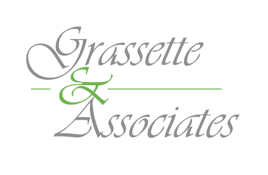 Call Us: 203-701-8723 Call Us: 203-701-8723 |
 Hours: Mon - Fri: 9 - 5 Hours: Mon - Fri: 9 - 5 |
 1008 Main St. Branford, CT 06405 1008 Main St. Branford, CT 06405 |
Owner Occupation of Purchased Properties
People purchase properties for various reasons. Some people need a first home, or a new home. Some want a vacation house. Others live part time in different places. Think of the so-called “snow birds” for an example of this, where they live summers in the north and winters in the south. No matter the intended use of the property, purchasers can find loans. But depending on the intended use, the requirements of lenders may vary.
Properties break down into three large categories: 1) primary homes; 2) second homes; and 3) investment properties. Each carries various risks and therefore lenders put various requirements on them.
Primary Homes
Primary homes (also known as primary residences) are just what they sound like – the home that the homeowner lives in. The homeowner must live there the majority of the time, and must not use it as a rental property. A loan granted on this type of property will likely be significantly lower priced than a loan granted on any other type of property, for reasons we will get into later. Lenders are also more likely to grant this type of loan, for the same reasons.
Loans approved as primary home loans generally require that the homeowner have the intention of either moving into the property (in the case of a purchase) or of remaining on the property (in the case of a refinance) at the time of the loan closing. If the homeowner knows that they will not be living in the property, they cannot assert to the bank that they will be, and they will not be obtain a primary home loan for the property. In fact, at the time of closing, they will be required to certify that they intend to live on the property.
Second Homes
Second homes is a somewhat nebulous category which includes seasonal homes and homes for people that, for example, live half the week in one location and half the week in another. This category is stuck between primary home loans and investment properties because though many people own multiple properties, they don’t always own those properties for the purpose of making money off of them.
Investment Properties
This is the second most common type of property, after primary homes. Investment properties are those which, for example, you would rent out to offset part or the entire purchase price. Whether you plan on actually making a profit or not, the property may be considered to be an investment property, depending on how you use it, and how much you use it personally.
Investment property loans are more expensive than primary home loans, and are more difficult to get. Why? Well, let’s think about this logically. Let’s say a homeowner is having trouble meeting all of their obligations. What are they going to stop paying first? The mortgage on the home they actually live in, or the property they see only a few times a year, if at all? The answer must be that they will do everything they can to retain their actual home, and will let the investment property go. This translates into investment property loans being given a higher risk rating than are primary home loans. Therefore, interest rates are higher.
Nothing requires you to be the occupant of a home. But if the owner will not be the occupant, they must inform the lender. The lender will determine whether they are still willing to lend on the property, and at what interest rate. A lender may also consider different factors in granting an investment property loan, such as the possibility of rental income. Under no circumstance should the owner misconstrue their intent with regards to the property. If they are caught doing this, it will only cause trouble down the line. This is not to say that just because a property is purchased as a primary home, it can only ever be used as one. However, at the time of the closing of the loan, there can be no intent already formed to use it in a way inconsistent with the terms of the loan.

